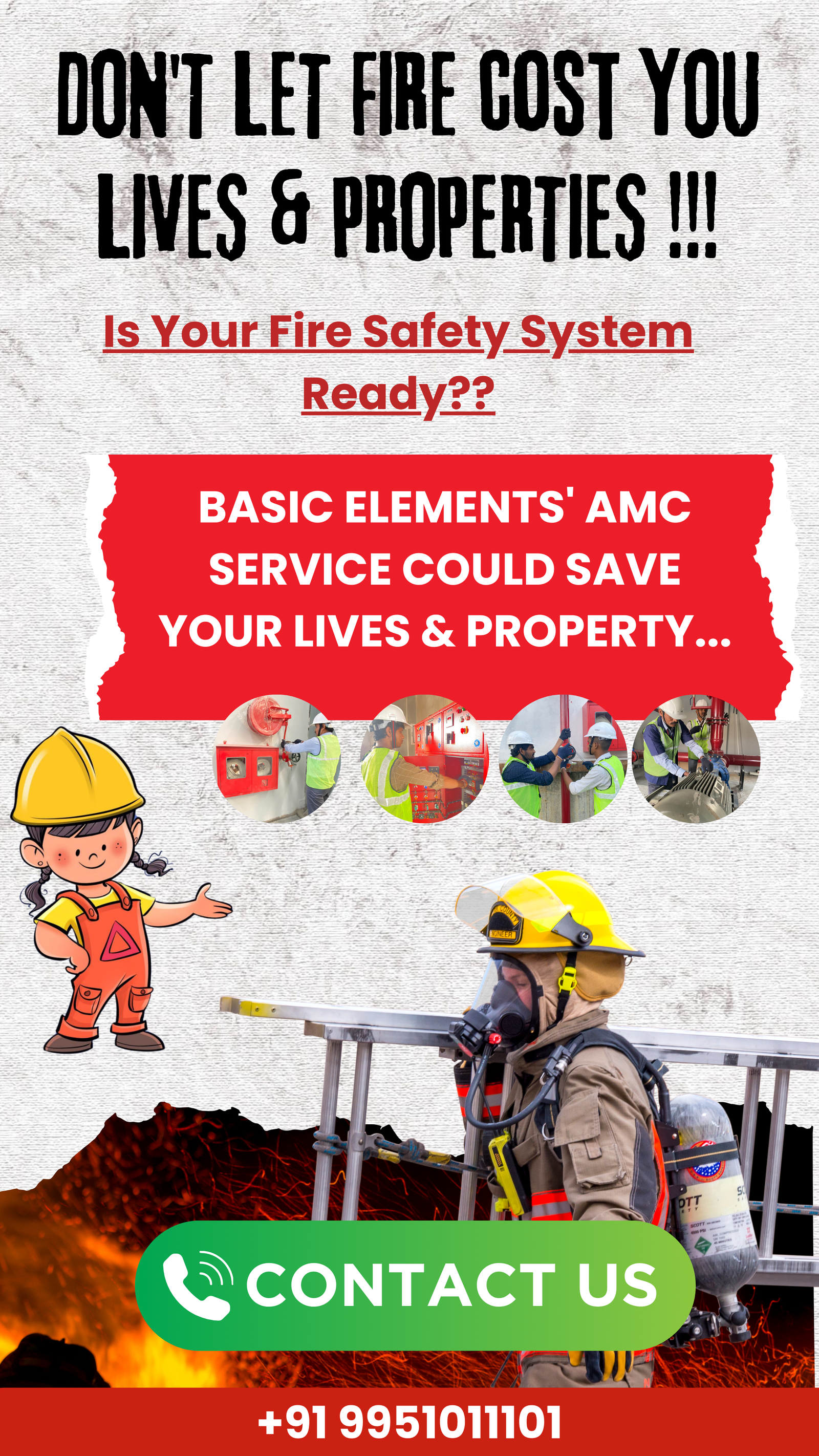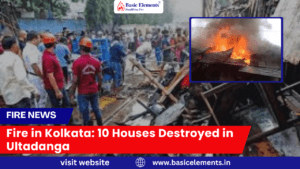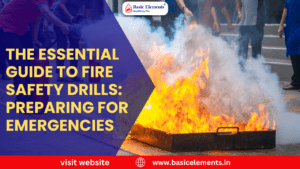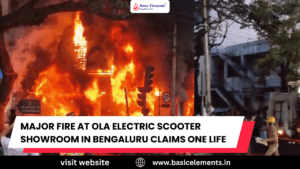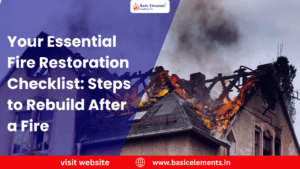In our ever-evolving world of architecture and urban development, one aspect of building design remains paramount: safety. At the forefront of this crucial consideration are firefighting systems, the unsung heroes that stand vigilant in our homes, offices, and public spaces. These complex networks of technology and engineering are designed with one primary goal – to protect lives and property from the devastating effects of fire.
But what exactly are fire fighting systems, and why are they so vital to building safety? How do they work, and what types are available for different kinds of structures? In this comprehensive guide, we’ll dive into the world of fire suppression and explore:
- The fundamentals of fire fighting systems and their importance
- Key components that make up a comprehensive fire protection setup
- The intricate mechanisms behind how these systems detect and suppress fires
- Various types of fire fighting systems suited for different building needs
- The critical role of maintenance in ensuring these systems function effectively
- How to select the right fire fighting solution for your specific building requirements
Whether you’re a property owner, a safety professional, or simply someone interested in understanding the technology that keeps us safe, this article will provide valuable insights into the complex yet fascinating world of fire fighting systems. Let’s embark on this journey to uncover how these silent guardians work tirelessly to keep our built environments secure.

What is a Fire Fighting System and Its Importance in Building Safety?
A fire fighting system, also known as a fire suppression system, is a set of equipment and tools designed to detect, control, and put out fires in buildings. These systems are a crucial part of keeping buildings safe from fire dangers.
Firefighting systems come in different types, but they all have the same main goal: to protect people and property from fire damage. Some common parts of these systems include:
- Smoke detectors
- Fire alarms
- Sprinkler systems
- Fire extinguishers
- Emergency exits and signs
Why are firefighting systems so important for building safety?
- Quick response: These systems can detect fires early and start working right away, often before people even notice the fire.
- Saving lives: By alerting people and helping to control fires, these systems give people more time to escape safely.
- Reducing damage: Fire suppression systems can stop fires from spreading, which means less damage to the building and what’s inside it.
- Lower insurance costs: Buildings with good fire protection systems often pay less for insurance because they’re safer.
- Following the law: Many places have laws that say buildings must have firefighting systems to keep people safe.
- Peace of mind: Knowing a building has a good fire protection system helps people feel safer when they’re inside.
In short, firefighting systems play a big role in keeping buildings safe. They protect lives, save property, and give everyone peace of mind. Whether it’s a home, office, or any other kind of building, having a good fire fighting system is a must for safety.
Components of a Comprehensive Fire Fighting System
A good fire fighting system has several important parts working together. Let’s look at the main components that help keep buildings safe from fires:
- Fire Alarm Systems Fire alarm systems are like the brain of the fire fighting setup. They:
- Detect fires quickly
- Make loud noises to warn people
- Sometimes automatically call the fire department
- Sprinkler Systems Sprinkler systems spray water to stop fires from spreading. They:
- Turn on when they sense high heat
- Cover a wide area with water
- Can put out small fires before they get big
- Fire Extinguishers Fire extinguishers are handheld tools for fighting small fires. They:
- Come in different types for different kinds of fires
- Are easy to use in an emergency
- Should be placed in easy-to-reach spots around the building
- Smoke Detectors Smoke detectors find fires early by sensing smoke. They:
- Make a loud noise when they detect smoke
- Can be connected to the main alarm system
- Need regular checking to make sure they work
- Fire Hoses Fire hoses are long, flexible tubes that spray water with high pressure. They:
- Are usually found in special cabinets in hallways
- Can reach far to fight fires
- Are mainly used by firefighters or trained people
Each of these parts plays a big role in a fire fighting system. Together, they create a strong defense against fires, helping to protect both people and buildings. Having all these components in place and well-maintained is key to a safe environment.
How Fire Fighting Systems Work: The Mechanisms Behind Fire Suppression
Fire fighting systems use different ways to stop fires. Let’s look at how these systems work to keep us safe:
Active vs Passive Fire Protection
First, it’s important to know there are two main types of fire protection:
- Active fire protection: These systems “do something” when there’s a fire. They turn on and actively fight the fire.
- Passive fire protection: These are built into the building to slow down fires. Things like fire-resistant walls are passive protection.
How Does a Fire Suppression System Work?
A fire suppression system is a type of active fire protection. Here’s how it works:
- Detecting the fire: Sensors like smoke detectors or heat detectors spot the fire first.
- Sending an alarm: The system warns people in the building about the fire.
- Activating suppression: The system starts working to put out the fire.

Automatic Fire Suppression
Many modern systems work automatically. This means they can fight fires without anyone having to turn them on. Here’s what happens:
- The system detects heat, smoke, or flames.
- It sends a signal to a control panel.
- The control panel triggers the suppression system.
- Suppression agents (like water or special chemicals) are released to put out the fire.
Firefighting Mechanisms
Different systems use different ways to stop fires:
- Water-based systems: These use water to cool the fire and stop it from spreading. Sprinklers are a common example.
- Foam systems: These cover the fire with a blanket of foam, cutting off its oxygen supply.
- Gas systems: These fill the room with special gases that put out the fire. They’re often used in places with expensive electronics.
- Powder systems: These spray a fine powder that stops the chemical reaction of the fire.
Each type of system is chosen based on what kind of building it’s in and what might catch fire there.
By understanding how these systems work, we can see why they’re so important for keeping buildings safe. They act quickly and can often stop a fire before it gets too big, saving lives and protecting property.
The Different Types of Fire Fighting Systems for Buildings
Buildings can have various fire fighting systems. Each type works a bit differently and is best for certain situations. Let’s look at some common types of sprinkler systems used in buildings:
- Wet Pipe Sprinkler Systems
This is the most common type of sprinkler system. Here’s how it works:
- The pipes are always filled with water
- When a fire starts, the heat breaks a small glass bulb in the sprinkler head
- Water immediately sprays out to fight the fire
- Only the sprinklers near the fire will turn on
Wet pipe systems are good for most buildings because they’re simple and quick to respond.

- Dry Pipe Sprinkler Systems
These systems are a bit different:
- The pipes are filled with pressurized air or nitrogen, not water
- When a sprinkler opens, the air pressure drops
- This drop in pressure lets water flow into the pipes and out of the sprinkler
- It takes a little longer to start spraying water than wet pipe systems
Dry pipe systems are great for cold areas where water in the pipes might freeze.

- Pre-action Sprinkler Systems
These systems have an extra step for safety:
- The pipes are empty, like in dry pipe systems
- They need two things to happen before water flows:
- A fire detection system (like a smoke detector) must sense a fire
- A sprinkler head must open
- This double-check helps prevent accidental water release
Pre-action systems are often used in places with valuable items that could be damaged by water, like museums or computer rooms.

- Deluge Sprinkler Systems
These are designed for high-risk areas:
- All sprinkler heads are open all the time (they don’t have the glass bulbs)
- When the system activates, water flows out of all sprinklers at once
- They’re triggered by heat detectors, smoke detectors, or manual alarms
Deluge systems are used in places where fires can spread very quickly, like in aircraft hangars or chemical storage areas.

Each of these systems has its strengths, and the choice depends on the building’s needs. Factors like the building’s use, climate, and contents all play a role in deciding which system is best. Having the right type of fire fighting system installed can make a big difference in protecting people and property from fire damage.
The Role of Maintenance in Ensuring Effective Fire Fighting Systems
Keeping fire fighting systems in good shape is very important. Even the best systems won’t work well if they’re not taken care of properly. Let’s look at why maintenance matters and how to do it right:
Why is Maintenance Important?
- Keeps systems working: Regular checks help make sure everything works when there’s a fire.
- Finds problems early: It’s better to fix small issues before they become big problems.
- Saves money: Taking care of equipment can stop expensive breakdowns.
- Follows the law: Many places have rules about keeping fire safety equipment in good condition.
- Protects lives: Well-maintained systems are more likely to work right in an emergency.
Fire System Maintenance Tips
Here are some important things to do:
- Make a schedule: Plan regular checks and stick to them.
- Check all parts: Look at every piece of the system, not just the main parts.
- Test alarms: Make sure fire alarms are loud enough and working correctly.
- Clean sensors: Dust can stop smoke detectors from working right.
- Replace old parts: Some things, like batteries, need to be changed regularly.
- Keep records: Write down what you check and fix each time.
Regular Inspections for Fire Safety Equipment
Different parts of the system need checking at different times:
- Monthly:
- Test fire alarms
- Check fire extinguishers are in the right places
- Quarterly:
- Inspect sprinkler heads
- Test fire pump (if you have one)
- Yearly:
- Full check of all systems
- Professional inspection by fire safety experts
Compliance with Safety Regulations
Following the rules is a big part of maintenance:
- Know the rules: Learn what laws apply to your building.
- Stay up to date: Safety rules can change, so keep informed.
- Get professional help: Some checks must be done by certified experts.
- Fix problems quickly: If an inspection finds issues, fix them right away.
- Keep paperwork: Save records of all inspections and repairs.
Selecting the Right Fire-Fighting System for Your Building Needs
Choosing the best fire-fighting system for your building is very important. The right system can save lives and protect property. Here’s what to think about when making this choice:
Factors to Consider When Choosing a Firefighting System
- Building Size and Layout
- Bigger buildings might need more complex systems
- The shape of your building affects where to put sprinklers and alarms
- Type of Occupancy
- What the building is used for matters a lot
- Homes, offices, factories, and hospitals all have different needs
- Fire Risks
- What kinds of fires are most likely in your building?
- Different materials burn differently and need specific firefighting methods
- Local Laws and Codes
- Every area has its own rules about fire safety
- Make sure your system follows all local laws
- Water Supply
- Some systems need a lot of water to work well
- Check if your building has enough water pressure
- Budget
- Think about both the cost to install and to maintain the system
- Sometimes, spending more at first can save money later
- Environmental Concerns
- Some systems are more eco-friendly than others
- Consider how the system might affect the environment
Building Type Considerations for Firefighting Solutions
Different buildings need different fire fighting systems. Here are some examples:
- Residential Buildings
- Usually need simpler systems
- Smoke detectors and fire extinguishers are must-haves
- Sprinkler systems are becoming more common in homes
- Office Buildings
- Need systems that can protect expensive equipment
- Might use systems that don’t damage electronics, like clean agent suppressors
- Often need systems that can cover large areas
- Might use deluge systems for quick, widespread protection
- Hospitals
- Need very reliable systems that won’t disrupt patient care
- Might use pre-action sprinkler systems to avoid accidental water release
- Historic Buildings
- Need careful planning to protect the building’s character
- Might use mist systems that use less water
- Data Centers
- Need systems that won’t harm computers
- Often use gas-based suppression systems
- Factories
- Might need special systems for chemical or electrical fires
- Often use foam or dry chemical systems
When picking a firefighting system, it’s smart to talk to experts. Fire safety professionals can help you understand your building’s specific needs and choose the best system. Remember, the goal is to find a system that fits your building, follows the rules, and keeps everyone safe. Taking time to choose the right system now can make a big difference if a fire ever happens.

